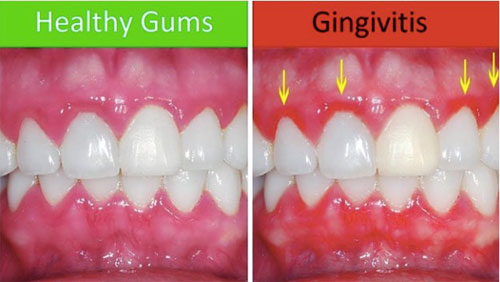When Healthy Gums Are No Longer a Given
When Healthy Gums Are No Longer a Given
Most people don’t think about their gums until something feels off—bleeding when brushing, a bit of swelling, maybe tenderness along the gumline. These symptoms are easy to dismiss. But they can be signs of an early stage of periodontal disease, which is both very common and very underappreciated.
At its worst, this condition doesn't just make your breath smell bad or hurt a little; it also weakens the structures that hold your teeth in place. If you don't take care of it, it can cause bone loss, tooth movement, and eventually tooth loss. Things that start out quietly below the surface can be hard to change back without help.
From Silent Inflammation to Structural Loss
Gum disease often begins with bacterial plaque, a film that forms on teeth when brushing isn’t quite enough or consistent. Over time, this plaque hardens into tartar, which clings stubbornly beneath the gums. As bacteria accumulate, the body launches a response—one meant to protect, but that can, ironically, begin to damage healthy tissue in the process.
This is where the disease often shifts from reversible gingivitis to a more destructive form: periodontitis. The inflammation becomes chronic. The gums begin to pull away. Pockets form where bacteria can flourish, and slowly, the jawbone starts to erode.
It doesn’t happen all at once. But it does happen—and more often than many realize.
What Treatment Really Looks Like—And Why It Matters
Early gum disease can usually be addressed with focused, non-surgical care. The process is known as scaling and root planing, and while it may sound technical, the goal is simple: remove what’s aggravating the tissue and allow the gums to begin healing.
- Specialized ultrasonic and manual tools clean below the gumline where brushing cannot reach.
- In some cases, antibiotics are applied locally to fight infection.
- For advanced cases, surgical options such as tissue regeneration or bone grafting may be recommended.
These methods don't just stop the disease; they also aim to restore lost support and repair damage.
A Discipline Built on Precision and Biocompatibility
There’s a quiet sophistication to periodontal dentistry. It’s not about dramatic transformations but meticulous care, guided by diagnostics and biology. The materials used—collagen membranes, enamel proteins, biocompatible grafts—are chosen for how they interact with the body’s natural healing processes.
Even diagnostics have evolved. Clinicians now rely on more than just probing depths and visual exams. Radiographic imaging, clinical attachment assessments, and microbial analysis help build a clearer picture—often before symptoms even appear.
Healing Depends on More Than Just the Procedure
No matter how advanced, treatment is only one part of the equation. Good periodontal health is a long-term relationship between the care you get at the office and the habits you keep at home.
Patients who do best after treatment usually:
- Maintain consistent home care and oral hygiene.
- Attend regular maintenance and checkup appointments.
- Adopt positive changes, such as switching to electric toothbrushes or using interdental cleaning tools.
Success isn’t about a single treatment—it’s about commitment over time.
There’s More at Stake Than Just the Gums
Science continues to explore how oral inflammation connects to broader systemic issues. Studies suggest links between periodontal disease and conditions like diabetes, cardiovascular disease, and even adverse pregnancy outcomes. While the research is ongoing, the message is already clear: gum health doesn’t live in isolation.
Protecting it protects more than just your teeth.
In Closing
Gum disease can be quiet, but it’s not harmless. The good news is that periodontal dentistry—when applied thoughtfully and early—can not only stop the damage but preserve what matters most. Healthy gums don’t just support a healthy mouth. They support a healthier life.
For individualized care rooted in experience and expertise, call (509) 822-5614 to schedule your visit.


